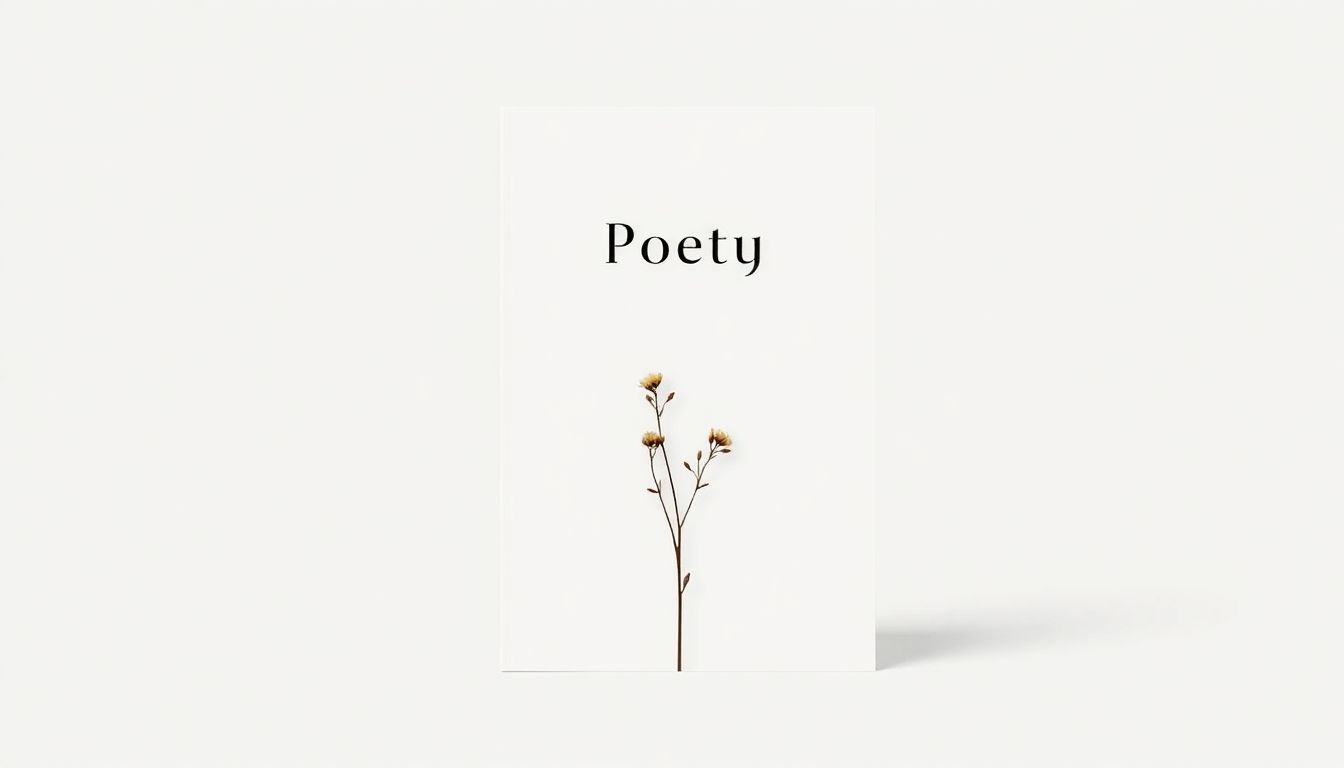So you’ve written some poems you’re proud of, but now you’re stuck wondering how on earth to get your poetry out there. Trust me, you’re not the only one—publishing poetry can feel like figuring out an overly complicated board game.
Stick with me, though, because I’ve got your back. By following along, you’ll learn exactly how to select the right publishing option, prep your manuscript, nail the perfect cover, and even save some money along the way.
Ready? Let’s jump into these 10 quick steps and finally get your poems the audience they deserve.
Key Takeaways
- Select a publishing method based on your goals—traditional publishers for broad bookstore distribution or self-publishing to keep creative control.
- Invest time in thorough editing, formatting, and organizing your manuscript, focusing on clarity, theme, and professionalism.
- Create an attractive cover and clean interior layout; use simple tools like Canva or hire affordable freelancers online.
- Follow submission guidelines carefully or choose user-friendly self-publishing platforms with broad distribution.
- Use social media strategically, connect with poetry groups online, and manage publishing timelines and submissions diligently for maximum visibility.

Step 1: Choose Where to Publish Your Poetry Book in 2025
The first thing you need to do when you’re considering publishing your poetry book is deciding exactly where you want it to go out into the world. Chances are, you’ve already come across tons of choices—from traditional publishers and literary journals to self-publishing platforms like alternatives to Amazon KDP, Smashwords, or even on your personal website.
To choose the best publishing route, you need to think about your goals. Are you aiming for wide distribution in bookstores or literary prestige? Then larger traditional publishers might be the way to go. If your focus is quicker publication times with full creative control and higher royalties, self-publishing could fit your style better.
Research different options carefully. Check publishers’ submission guidelines, look into their reputations online, and ask other poets about their experiences in specific poetry publishing groups on social media. Realistically, the poetry market is growing quickly—by around 8-10% in 2025—mostly because of digital platforms and self-publishing. This means there’s plenty of opportunity, but it also means more competition.
Pro tip: Joining local poetry communities or online writing groups can help you figure out what genuinely works. Poets in these circles usually share valuable inside knowledge that can point you in the right direction and make this whole process a lot less stressful.
Step 2: Decide Between Traditional Publishers or Self-Publishing Platforms
Once you’ve looked at your publishing options, it’s time to narrow down between traditional publishing houses and self-publishing platforms. Both options have their perks and downsides.
Traditional publishers offer wider distribution networks, bookstore placements, and sometimes more recognition in literary circles. They’ll handle the marketing and distribution side, potentially reaching readers you can’t reach on your own. On the flip side, traditional publishing usually means longer waiting times—think months or even years—plus tighter guidelines on your book’s aesthetics, format, and cover design.
Self-publishing platforms, however, put the steering wheel firmly in your hands. You decide everything from your book’s design to pricing and even the publishing timeline. Want inspiration on creating something visually unique? Check out these useful tips on choosing the best fonts for book covers. Just keep in mind, self-publishing means you’ll also need to learn about marketing, sales, and distribution yourself (or hire someone to help).
Another point worth remembering: costs. Traditional publishers rarely ask authors to pay publishing costs upfront—if they do, run in the other direction—but self-publishing involves initial investments like editing fees, cover design costs, and possibly promotional expenses.
Think carefully about your personal author goals, your budget, your available time, and resources before deciding between these two routes. It’s always helpful to talk openly with poets who’ve experienced both—tap into their insights, they’ll save you tons of future headaches.
Step 3: Prepare Your Poetry Manuscript for Publication
Alright, now it’s time to get your poetry manuscript ready. First things first—edit, edit, edit. You might think poetry editing is just about spelling and grammar, but it’s not. Your poetry collection should feel cohesive, with clearly-considered themes and logical progression.
Consider enlisting the help of professional editors who specialize in poetry. They’ll check your work for clarity, impact, pacing, thematic consistency, and emotional depth. If hiring an editor isn’t within your budget, another route is exchanging critiques with other poets or becoming a beta reader yourself. Even better, here’s a quick guide on becoming a beta reader to get you started.
Formatting-wise, make certain your manuscript meets submission or self-publishing guidelines. Most publishers or platforms share specific formatting standards for manuscripts—this typically includes font size, margins, heading styles, and spacing.
Another pro tip: Create a contents page and an acknowledgment section (if you’re thanking anyone), as publishers usually expect to see these elements in submissions. Attention to detail like this goes a long way in impressing publishers or making your self-published book look professional.
Most importantly, remember poetry readers expect quality, sincerity, and authenticity. So triple-check everything, read your poems aloud, and ask someone’s opinion you trust to help flag any confusing or weaker poems. Taking these preparation steps seriously could truly make the difference between a poetry collection that shines and one that doesn’t resonate with your readers.

Step 4: Design a Professional Cover and Layout for Your Poetry Book
Your poetry book’s cover isn’t just for decoration—it has to instantly grab attention and clearly convey your vibe, style, and genre.
You could either hire a freelance graphic designer—sites like Fiverr and Upwork offer affordable design services—or create your own design using tools like Canva or Adobe Express.
Use clean typography that’s easy on the eyes (seriously, skip Comic Sans), include impactful and meaningful imagery, and think carefully about color schemes that match your poetry’s mood.
If you’re unsure about fonts, this guide on the best fonts for book covers can point you in the right direction and help you avoid rookie design mistakes.
Remember, your book’s interior layout is important, too—use consistent spacing, easy-to-follow formatting, and ample white space to avoid overwhelming readers.
Step 5: Submit Your Poetry Manuscript to Publishers or Publish It Yourself
Submitting poetry to publishers usually means closely following their submission guidelines—seriously, don’t skip this step.
Double-check format requirements, page limits, author bio details, and whether you need a cover letter—publishers can get picky about small details.
If you’re publishing yourself—through platforms such as Amazon KDP, Draft2Digital, or Lulu—you’ll need to create an account, upload your formatted manuscript, cover design, and set your price and royalty rate.
Platforms like Smashwords also distribute your ebook to dozens of online retailers, making your life a lot easier.
For a breakdown on going the self-publishing route without the stress of traditional gatekeepers, this detailed guide on how to get a book published without an agent offers plenty of helpful pointers.
Step 6: Understand Poetry Book Submission Fees, Deadlines, and Cost-Free Options
Here’s the truth you might not like: roughly 79% of poetry reading periods charge submission fees these days, averaging around $24 per submission—that’s definitely higher than in past years.
Also, about 60% of first-book reading periods exclude poets who can’t afford fees, averaging $26 a shot, which honestly can add up fast.
To navigate this reality, you need options: look for fee-waiver opportunities, no-fee submission windows, or contests that don’t charge anything at all.
You’ll find updated submission listings with fees and deadlines through trusted sites like Newpages or Submittable, or even through lively poetry groups on social media.
And please—seriously—always track all your submissions, deadlines, costs, and responses in a spreadsheet or using submission trackers; organization pays off big.
Step 7: Promote Your Published Poetry Book Online Using Social Media
Releasing your book into the wild without promoting it online is pretty much like whispering poetry in an empty room.
Social media—especially Instagram, Twitter, and TikTok—has become a major player in promoting poetry collections through hashtags like #PoetryCommunity or #WritersLift.
Also, share short excerpts or quote images that make scrolling readers stop in their tracks, and don’t be shy about asking friends or fellow poets to share your announcements and events.
Platforms like Goodreads can help you arrange giveaways or build reviews, too—just don’t spam or endlessly promote yourself; authentic interactions and meaningful conversations bring better results.
Another underrated trick: create blog posts related to your poetry themes by using resources like these winter writing prompts, which can draw readers to your site organically.
Step 8: Track Submissions and Manage Your Poetry Publishing Schedule
Publishing poetry requires keeping track of a ton of moving parts—deadlines, submissions, fees, publication dates, readings—you name it.
Tools like Airtable, Trello, or even a simple Excel spreadsheet can help you keep tabs on everything you’ve submitted, including journals, status updates, response dates, and follow-ups.
Consistency is key: schedule dedicated time weekly or monthly to monitor your submissions and stay ahead of important deadlines to prevent missed opportunities or double-submissions.
Speaking of deadlines—poetry contests and open reading periods often provide tight windows of submission—it helps to mark these key dates directly on your calendar to avoid surprises and last-minute stress.
Step 9: Apply for Poetry Publishing Grants and Fee Waivers
If submission fees are out of your budget—and let’s face it, they often are—then applying for grants and fee-waiver programs makes good financial sense.
Organizations like Poets & Writers and the Academy of American Poets periodically offer listings of available grants and financial support specifically designed for poets.
This is exactly how you turn that overwhelming submissions cost situation into something manageable, because grant programs cover everything from printing and submission fees to marketing costs.
Don’t feel intimidated—grant applications can be simple and usually just require some background info, an artist statement, project description, or writing sample; preparing templates saves tons of time later.
Many publishers also offer fee waivers if you ask directly—and you definitely should—so make it a habit to politely inquire during your submission process.
Step 10: Use Affordable and Reliable Poetry Book Printing Options
If you’re leaning towards self-publishing a physical poetry collection—trust me—finding affordable yet reliable printing options becomes crucial.
Print-on-demand services like IngramSpark and Amazon KDP offer cost-effective methods because you won’t need to pay upfront to print hundreds of copies that might never sell (ouch).
Another good tip: always order proof copies to see how your poetry actually looks in your hands before releasing it to readers.
Also, compare printing quotes (including hidden fees!) from various providers to ensure you’re choosing one within your budget.
Whichever printer you select, check their reviews closely; cheap but unreliable printing can make all your hard work look amateurish, wasting time and funds.
Your best bet is sticking with trusted printers recommended in writing communities or through self-publishing group pages on platforms like Facebook or Reddit; reliable testimonials from fellow poets—the true DIY experts—mean everything in avoiding headaches later.
FAQs
Traditional publishers handle editing, distribution, and promotion but require acceptance and longer timelines. Self-publishing provides creative control, faster release times, and higher royalties but demands personal effort in managing production, promotion, and marketing your poetry book.
The costs vary widely based on your chosen publication method. Traditional publishers typically don’t charge upfront fees but pay lower royalties. Self-publishing expenses may include editing, cover design, layout services, printing costs and marketing—but royalty percentages are higher.
Consistently post excerpts, images, or videos of your poems on platforms like Instagram, Facebook, and Twitter. Connect genuinely with poetry communities, engage with followers, share your personal writing journey, and encourage readers to leave reviews and share your book.
Yes, literary foundations, government arts councils, and poetry organizations often provide publication grants, awards, and fee waivers for poets. Research opportunities relevant to your work and eligibility, and carefully adhere to application guidelines and deadlines.
